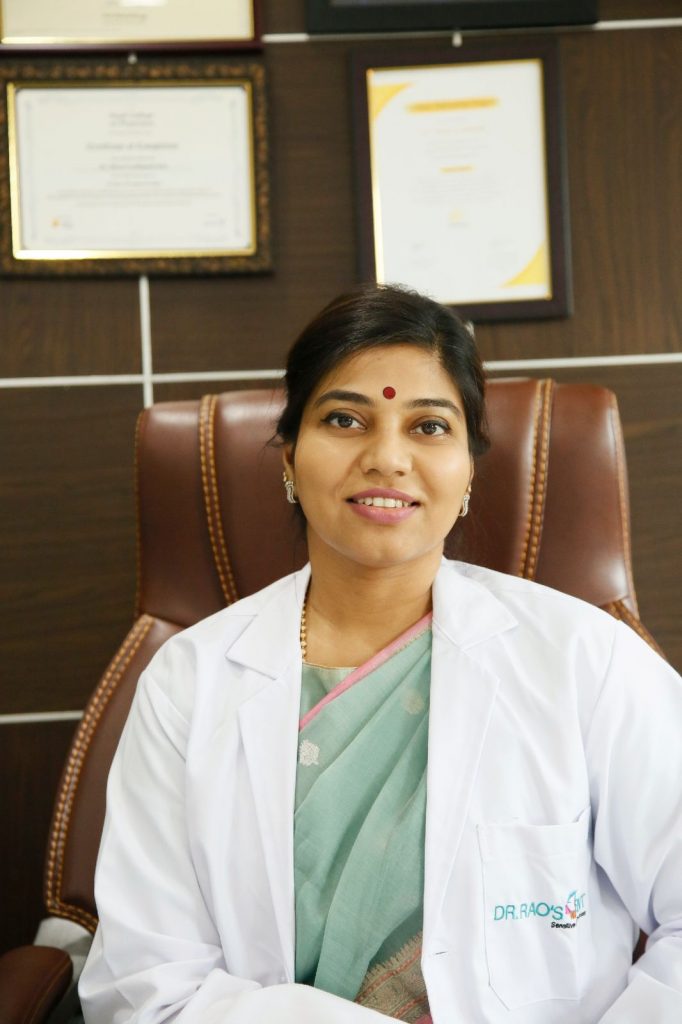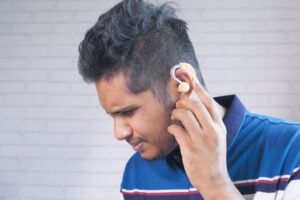Sometimes parents bring in their child and say, “Doctor, their ear looks a little tucked in… is that normal?”
And I tell them, “It might be something called cryptotia. And yes, we can help.”
Cryptotia means the top part of the ear isn’t sitting outside the way it usually does. Instead, it’s partly tucked under the skin, almost hidden.
Most people haven’t heard of it. And that’s okay. It doesn’t affect hearing, but it can affect comfort, confidence, and everyday things like wearing glasses or masks.
At our clinic, I often meet parents who are surprised to learn that something so subtle can affect daily life. So let me walk you through what cryptotia is, what causes it, how it can show up, and how we treat it in the simplest way possible.
So, what exactly is cryptotia?
Cryptotia is something a child is born with. The name comes from Greek. It literally means hidden ear.
The upper rim of the ear, what we call the helix, doesn’t stick out properly. Instead, it gets pulled into the scalp a bit, making the ear look like it’s missing its natural fold.
Sometimes it happens on one side. Sometimes both. It’s more common in boys, usually on the right ear. It’s seen more in East Asian families, but it can happen in anyone.
What causes it?
We’re still learning, but we think it happens during pregnancy when the ear cartilage doesn’t fully develop the way it should.
One theory is that a muscle near the top of the ear pulls it inward while the baby is growing. Genetics may play a role too. Sometimes it runs in families. Sometimes not. There’s no blame here. It’s just how the body formed.
Will this affect my child’s hearing?
No. And this is the first thing I reassure parents about.
The hearing mechanism inside the ear is usually completely normal.
But there are practical issues. Kids might struggle with putting on glasses. A mask might not sit right. Helmets may feel uncomfortable. These may sound like small things, but they add up in daily life.
Why it matters more than it seems
Many parents first come in because of how the ear looks. And that’s completely valid.
But beyond appearance, I’ve seen how something as small as an ear can affect how a child feels about themselves.
Kids notice. Classmates notice. Teasing happens. Or sometimes the child starts avoiding mirrors, photos, or tying up their hair. These are things they may not say out loud, but parents pick up on it.
You are not imagining it. This matters.
That’s why we don’t treat cryptotia as just cosmetic. We treat the child as a whole.
Can it be corrected?
Yes. And depending on the child’s age, there are two paths we usually explore.
If we catch it early, ideally within the first few weeks after birth, we can use a soft mold to gently shape the ear. This is painless, safe, and works best while the cartilage is still soft. The earlier we start, the better it works.
If the child is older or the ear needs more support, we look at surgery.
The goal is simple.
To release the buried part of the ear, reshape the cartilage, and recreate the natural fold between the ear and scalp.
The methods vary. Sometimes we use local skin flaps. Sometimes we add a small graft. It all depends on what your child’s ear needs.
What is surgery like?
Surgery is done under general anesthesia. We take our time, plan carefully, and customise the approach for your child.
In some cases, we borrow a tiny bit of cartilage from the same ear to build structure. Once healed, the ear holds its shape well.
Most kids recover comfortably. We do regular follow-ups, guide you through the healing process, and make sure everything settles safely. Like any surgery, there’s a small chance of scarring or needing minor adjustments later.
But the outcomes are often very positive, not just in appearance, but in how the child carries themselves afterwards.
When is the right time to treat it?
If your baby has just been born and you notice something off with the shape of the ear, bring them in soon. We might still have time to do molding. And if not, we will guide you gently on what to expect next.
For older children, the best time for surgery is usually between 5 and 6 years old, before they start school. But we also help teens and adults. It’s never too late.
What matters is that you feel informed and supported in whatever choice you make.
You're not alone. We’re here to help.
I’ve met parents who carry quiet guilt, thinking, why didn’t we notice this earlier, or wondering if they waited too long. Please know, there’s no perfect timeline. Only the next step forward.
At my clinic, we look at the full picture. How your child feels. What’s possible. And what makes the most sense for your family. No pressure. Just guidance, clarity, and care!
Worried about a hidden or misshapen ear?
Book a consultation with Dr. Shree Rao. Let’s sit together and talk about the best way forward for your child and your peace of mind.







